Do you have a question about the Panasonic LZW2004 and is the answer not in the manual?
Explains the "Space Tune" function for automatic sound adjustment based on TV position and viewer's location.
Warns about image retention on OLED screens and provides preventative measures to avoid displaying static images.
Details the automatic panel maintenance process and user precautions during operation to preserve screen quality.
Provides warnings and cautions regarding the safe use and handling of the mains plug and power cord.
Warns about risks associated with improper installation and environmental exposure like moisture and dust.
Details hazards related to TV stability, potential falls, and safety precautions for furniture placement.
Lists standard accessories included with the TV, with references to their page numbers for details.
Details the assembly process for attaching the TV pedestal using screws.
Outlines necessary precautions before installing the TV, such as handling the screen and avoiding scratches.
Provides step-by-step instructions for firmly assembling the TV pedestal.
Specifies the location and dimensions for wall-hanging bracket mounting points on the TV rear.
Details risks and precautions for installing wall-hanging brackets, advising professional installation.
Explains basic connections for AV devices and aerials, including cable types and diagrams.
Identifies and describes all connection terminals on the TV, including HDMI, USB, and audio ports.
Details the connection of the mains power lead and how to secure it with a cable tie.
Explains how to use and release the bundled cable tie for managing the mains lead.
Explains how to use HDMI Auto Setting for optimal 4K/HDR image quality and frame rates.
Describes how VRR/FreeSync enhances gaming experience and how to enable it.
Details how to connect video equipment like DVD players and camcorders using AV cables.
Explains connecting to an amplifier for multi-channel sound from external equipment.
Guides on using headphones and subwoofers by adjusting the sound output settings.
Instructs on connecting a USB HDD for recording purposes via the USB 1 port.
Explains how to use VIERA Link for connecting and controlling multiple Panasonic devices.
Details the insertion and removal of CI modules for encrypted channels and firmware compatibility.
Shows how to attach and use the cable clamp to secure the mains lead to the TV.
Provides instructions on bundling cables with hooks and loops for tidy management.
Explains the process of pairing Bluetooth devices, including audio devices and limitations.
Guides on pairing the TV remote control, which uses Bluetooth or infrared communication.
Details remote control buttons, pairing, registration, and troubleshooting for operation.
Provides instructions for installing and removing batteries from the remote control, including safety notes.
Explains the error message when remote control modes mismatch and how to resolve it.
Details procedures to force reset the TV's remote control mode to default setting 1.
Guides on choosing a voice service for the TV's voice control function.
Explains how to use the voice control microphone to operate the TV.
Describes the function of the power LED, ambient sensor, and control panel buttons on the TV.
Explains how to cycle through input modes using the dedicated button.
Details how to display the menu bar by pressing and holding the Menu button.
Initial step to power on the TV for the first-time auto setup process.
Guides on selecting language, country, and viewing environment during initial setup.
Explains basic remote control operations like moving the cursor and selecting items.
Instructions for turning on the TV using the power button or remote control.
Explains how to select different viewing modes available on the TV.
Guides on selecting TV channels using numeric buttons or channel up/down.
Explains how to access the built-in eHELP manual for detailed operating instructions.
Guides on navigating the eHELP menu to find specific topics or sections.
Details how to select specific items or topics within the eHELP manual.
Addresses the delay in image display after power-on, stating it's normal panel adjustment.
Troubleshooting steps for when the TV fails to power on, checking mains connection and batteries.
Explains the auto power standby function causing the TV to enter standby mode.
Provides troubleshooting for remote control issues, including battery checks and pairing.
Offers solutions for cases where no image is displayed on the TV screen.
Mentions the TV's self-test feature for diagnosing picture or sound problems.
Suggests power cycling or initializing settings if unusual image persists.
Advises setting HDMI Auto Setting to Mode1 for unusual external equipment signals.
Suggests setting the audio output format of connected HDMI equipment to PCM.
Recommends checking remote control pairing and network connections for voice control issues.
Explains that TV parts becoming hot is normal and does not affect performance or quality.
Clarifies that slight panel movement with finger pressure is normal and not a malfunction.
Explains that an orange LED indicates panel maintenance is underway and advises against touching the screen.
Provides instructions for regular and stubborn dirt cleaning of the TV display, cabinet, and pedestal.
Advises wiping the mains plug with a dry cloth regularly to prevent fire or shock hazards.
Lists key technical specifications including model, dimensions, mass, power source, panel, and sound output.
Details the types and capabilities of various connection terminals like AV, HDMI, and USB.
Specifies details about the Common Interface card slot and ETHERNET port.
Provides information on USB port specifications and digital audio output formats.
Lists the supported digital and analogue receiving systems for satellite, digital, and analogue broadcasts.
Specifies the recommended operating temperature and humidity range for the TV.
Lists the Wi-Fi standards and frequency bands supported by the built-in wireless LAN.
Outlines the security protocols (WPA3, WPA2, WEP) used for wireless network connections.
Details the Bluetooth version and frequency band supported by the TV.
Explains the "Space Tune" function for automatic sound adjustment based on TV position and viewer's location.
Warns about image retention on OLED screens and provides preventative measures to avoid displaying static images.
Details the automatic panel maintenance process and user precautions during operation to preserve screen quality.
Provides warnings and cautions regarding the safe use and handling of the mains plug and power cord.
Warns about risks associated with improper installation and environmental exposure like moisture and dust.
Details hazards related to TV stability, potential falls, and safety precautions for furniture placement.
Lists standard accessories included with the TV, with references to their page numbers for details.
Details the assembly process for attaching the TV pedestal using screws.
Outlines necessary precautions before installing the TV, such as handling the screen and avoiding scratches.
Provides step-by-step instructions for firmly assembling the TV pedestal.
Specifies the location and dimensions for wall-hanging bracket mounting points on the TV rear.
Details risks and precautions for installing wall-hanging brackets, advising professional installation.
Explains basic connections for AV devices and aerials, including cable types and diagrams.
Identifies and describes all connection terminals on the TV, including HDMI, USB, and audio ports.
Details the connection of the mains power lead and how to secure it with a cable tie.
Explains how to use and release the bundled cable tie for managing the mains lead.
Explains how to use HDMI Auto Setting for optimal 4K/HDR image quality and frame rates.
Describes how VRR/FreeSync enhances gaming experience and how to enable it.
Details how to connect video equipment like DVD players and camcorders using AV cables.
Explains connecting to an amplifier for multi-channel sound from external equipment.
Guides on using headphones and subwoofers by adjusting the sound output settings.
Instructs on connecting a USB HDD for recording purposes via the USB 1 port.
Explains how to use VIERA Link for connecting and controlling multiple Panasonic devices.
Details the insertion and removal of CI modules for encrypted channels and firmware compatibility.
Shows how to attach and use the cable clamp to secure the mains lead to the TV.
Provides instructions on bundling cables with hooks and loops for tidy management.
Explains the process of pairing Bluetooth devices, including audio devices and limitations.
Guides on pairing the TV remote control, which uses Bluetooth or infrared communication.
Details remote control buttons, pairing, registration, and troubleshooting for operation.
Provides instructions for installing and removing batteries from the remote control, including safety notes.
Explains the error message when remote control modes mismatch and how to resolve it.
Details procedures to force reset the TV's remote control mode to default setting 1.
Guides on choosing a voice service for the TV's voice control function.
Explains how to use the voice control microphone to operate the TV.
Describes the function of the power LED, ambient sensor, and control panel buttons on the TV.
Explains how to cycle through input modes using the dedicated button.
Details how to display the menu bar by pressing and holding the Menu button.
Initial step to power on the TV for the first-time auto setup process.
Guides on selecting language, country, and viewing environment during initial setup.
Explains basic remote control operations like moving the cursor and selecting items.
Instructions for turning on the TV using the power button or remote control.
Explains how to select different viewing modes available on the TV.
Guides on selecting TV channels using numeric buttons or channel up/down.
Explains how to access the built-in eHELP manual for detailed operating instructions.
Guides on navigating the eHELP menu to find specific topics or sections.
Details how to select specific items or topics within the eHELP manual.
Addresses the delay in image display after power-on, stating it's normal panel adjustment.
Troubleshooting steps for when the TV fails to power on, checking mains connection and batteries.
Explains the auto power standby function causing the TV to enter standby mode.
Provides troubleshooting for remote control issues, including battery checks and pairing.
Offers solutions for cases where no image is displayed on the TV screen.
Mentions the TV's self-test feature for diagnosing picture or sound problems.
Suggests power cycling or initializing settings if unusual image persists.
Advises setting HDMI Auto Setting to Mode1 for unusual external equipment signals.
Suggests setting the audio output format of connected HDMI equipment to PCM.
Recommends checking remote control pairing and network connections for voice control issues.
Explains that TV parts becoming hot is normal and does not affect performance or quality.
Clarifies that slight panel movement with finger pressure is normal and not a malfunction.
Explains that an orange LED indicates panel maintenance is underway and advises against touching the screen.
Provides instructions for regular and stubborn dirt cleaning of the TV display, cabinet, and pedestal.
Advises wiping the mains plug with a dry cloth regularly to prevent fire or shock hazards.
Lists key technical specifications including model, dimensions, mass, power source, panel, and sound output.
Details the types and capabilities of various connection terminals like AV, HDMI, and USB.
Specifies details about the Common Interface card slot and ETHERNET port.
Provides information on USB port specifications and digital audio output formats.
Lists the supported digital and analogue receiving systems for satellite, digital, and analogue broadcasts.
Specifies the recommended operating temperature and humidity range for the TV.
Lists the Wi-Fi standards and frequency bands supported by the built-in wireless LAN.
Outlines the security protocols (WPA3, WPA2, WEP) used for wireless network connections.
Details the Bluetooth version and frequency band supported by the TV.
| Display Type | OLED |
|---|---|
| Smart TV | Yes |
| Operating System | my Home Screen |
| HDMI Ports | 4 |
| Processor | HCX Pro AI Processor |
| HDMI Version | 2.1 |
| Refresh Rate | 120Hz |
| USB Ports | 3 |
| Bluetooth | Yes |
| Wi-Fi | Yes |
| Resolution | 4K Ultra HD |
| HDR | Dolby Vision, HLG |
| Screen Size | 55 inches |
| Operating System Version | 7.0 |

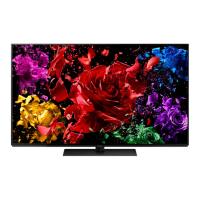
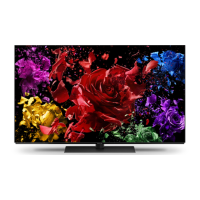
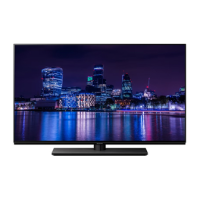
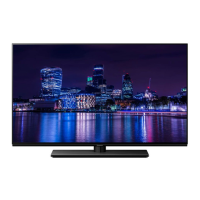

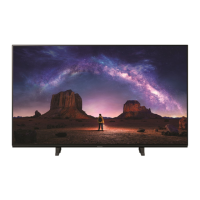
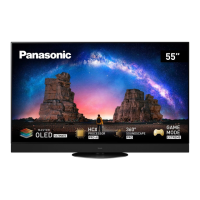
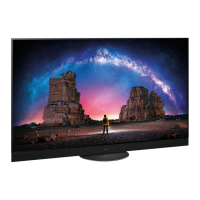
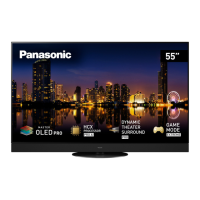
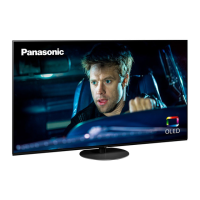
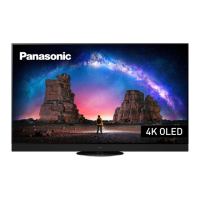
